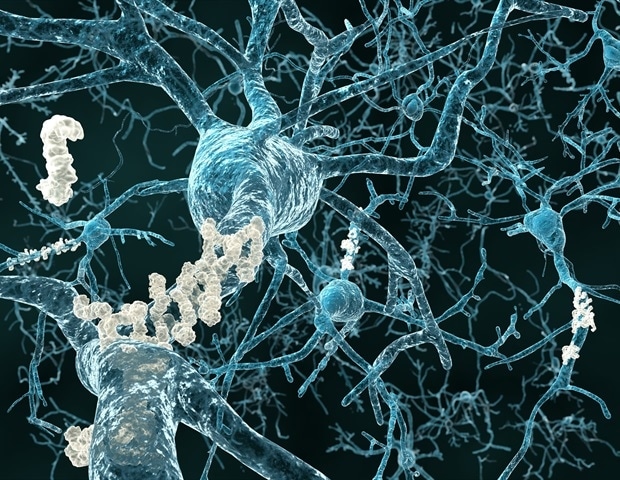Researchers now have a powerful new way to understand the types of brain cells that are affected in neurodegenerative diseases and to uncover connections between conditions such as Parkinson’s, Alzheimer’s, and other forms of dementia.
The Aligning Science Across Parkinson’s (ASAP) initiative and Allen Institute are joining forces to unlock insights into Parkinson’s and other neurodegenerative diseases through an expansion of the Allen Brain Cell (ABC) Atlas visualization tool – uniting data from millions of human brain cells and enabling researchers to explore the brain at unprecedented resolution.
Through this collaboration, ASAP’s Collaborative Research Network (CRN) Cloud repository will add data from 3 million human cells across 9 brain regions from individuals with Parkinson’s to the 6.4 million human cells already available in the ABC Atlas visualization tool – an increase of nearly 50%.
The collaboration marks the first time data from patients with Parkinson’s disease will be included in the ABC Atlas. By increasing access to the data and using a common language for cell types, both ASAP and Allen Institute are setting a new standard across the research community for characterizing disease-related changes in specific cell types of the brain. To support this work, ASAP is working with The Michael J. Fox Foundation for Parkinson’s Research (MJFF) to implement its programs.
“When we launched the CRN Cloud platform in 2024, we set out to turn data from scarce patient brain samples into a catalyst for discovery,” said Ekemini A. U. Riley, PhD, Managing Director of ASAP. “This collaboration unlocks powerful new opportunities, giving researchers access to high-value datasets that could transform our understanding of Parkinson’s and other neurodegenerative diseases.”
The NIH BRAIN Initiative Cell Atlas Network (BICAN) supported the creation of a standardized reference of the cell types that make up the human brain in the spirit of the Human Genome Project. The Seattle Alzheimer’s Disease Brain Cell Atlas (SEA-AD) was the first disease study to adopt this cellular reference framework to identify vulnerable and affected cell types in Alzheimer’s Disease.
“This framework sets up a system to understand what types of cells and molecular programs are affected in any brain disease at a very high level of detail, and to compare across diseases using the same vocabulary,” says Ed Lein, Senior Investigator at the Allen Institute and a lead investigator on efforts in BICAN and SEA-AD, as well as the current collaboration with ASAP.
Parkinson’s disease is now the second most common and fastest-growing neurodegenerative condition worldwide. As of today, more than 10 million people across the globe are living with Parkinson’s – a number that is expected to double by 2040. With no known way to prevent, slow, or stop its progression, it remains a critical global health challenge.
In studying diseases like Parkinson’s, data from postmortem human brain samples are a precious resource that are extremely limited. They are costly and time-intensive to collect and manage, making open access essential for accelerating research and discovery. Postmortem human brains have been key for many foundational discoveries in neuroscience, including the identification of the pathological features of Parkinson’s and Alzheimer’s. These discoveries – such as identifying that dopamine-producing neurons are the ones affected in Parkinson’s and developing dopamine replacement therapies, like L-dopa (the only effective treatment for Parkinson’s) – have paved the way for developing targeted therapies and identifying biomarkers for disease diagnosis.
“Single-cell genomics has unlocked new frontiers in understanding cell types in the brain and targeting them with therapies,” said Tyler Mollenkopf, Associate Director, Data & Technology at the Allen Institute.
We released the Allen Brain Cell Atlas in 2023 to help researchers everywhere explore the thousands of cell types in the mammalian brain. It’s a huge step forward to incorporate ASAP’s Parkinson’s data and empower scientists with more ways to crack the code on brain disease.”
Tyler Mollenkopf, Associate Director, Data & Technology, Allen Institute
Now, researchers who study neurodegenerative diseases have access to this critical data to explore how Parkinson’s, Alzheimer’s, and related neurodegenerative diseases are connected. These conditions share similar symptoms – like movement problems, memory loss, sleep issues, and changes in automatic body functions – which may be driven by common underlying causes. With this collaboration, researchers have a singular place to visualize cross-disease data using a shared system for labeling cell types – allowing them to unlock deeper insights into how cells, brain anatomy, and neurodegenerative conditions intersect.
“The Allen Institute has provided many large-scale foundational data and resources about the cell types and circuits in the brain to the broad community,” says Hongkui Zeng, Executive Vice President of the Allen Institute, Director of Allen Institute for Brain Science, and a long-time lead investigator in BICAN and other BRAIN Initiative programs. “Partnering with ASAP in revealing how brain cells go awry in Parkinson’s disease will greatly amplify the impact we can jointly make to accelerate the development of more effective treatments.”
Source:
Aligning Science Across Parkinson’s
